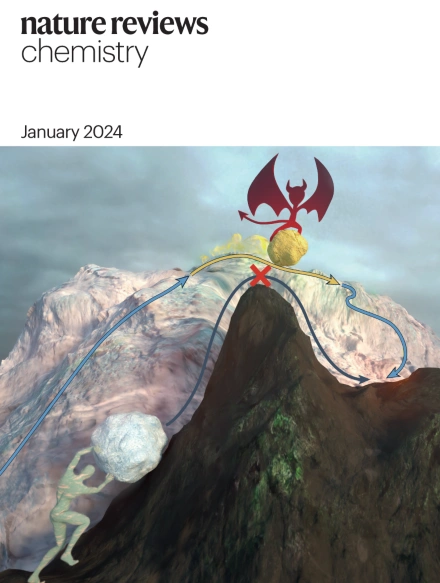Rethinking carbanion chemistry from donor substituents to weakly coordinating carbanions
IF 51.7
1区 化学
Q1 CHEMISTRY, MULTIDISCIPLINARY
引用次数: 0
Abstract
Carbanionic compounds provide unique reactivity patterns resulting from the high negative partial charge at the carbon centre, making them invaluable in chemical synthesis. They are important reagents in synthesis, including for challenging metalation reactions or the formation of C–C bonds. Despite this, broader applications have long been limited by their high reactivity and sensitivity to air and moisture. However, recent studies have underscored the versatility of carbanions beyond their traditional role as strong bases and nucleophiles. Utilization of molecular design strategies has opened applications such as their use as electron-donating groups isoelectronic with amines, ambiphilic reagents and even as weakly coordinating anions. In this review article, we provide an overview of these emerging uses of carbanionic compounds, aiming to inspire a broader rethinking of their potential and to encourage the development of new applications. This Review highlights the unconventional reactivities of carbanions beyond their traditional roles as nucleophiles and strong bases. It summarizes their applications as ambiphiles, powerful electron-donating groups and even weakly coordinating anions, emphasizing novel synthetic methodologies, catalytic applications and the development of new reagents.

从供体取代基到弱配位碳离子的碳化学再思考。
碳离子化合物提供了独特的反应模式,由于在碳中心的高负部分电荷,使它们在化学合成中非常宝贵。它们是合成中的重要试剂,包括挑战金属化反应或形成C-C键。尽管如此,长期以来,由于其高反应性和对空气和水分的敏感性,其更广泛的应用受到限制。然而,最近的研究强调了碳离子的多功能性,超越了它们作为强碱和亲核试剂的传统作用。分子设计策略的应用开辟了一些应用领域,如作为供电子基团与胺、亲两性试剂等电子,甚至作为弱配位阴离子。在这篇综述文章中,我们对碳离子化合物的这些新用途进行了概述,旨在激发人们对其潜力的更广泛的反思,并鼓励开发新的应用。
本文章由计算机程序翻译,如有差异,请以英文原文为准。
求助全文
约1分钟内获得全文
求助全文
来源期刊

Nature reviews. Chemistry
Chemical Engineering-General Chemical Engineering
CiteScore
52.80
自引率
0.80%
发文量
88
期刊介绍:
Nature Reviews Chemistry is an online-only journal that publishes Reviews, Perspectives, and Comments on various disciplines within chemistry. The Reviews aim to offer balanced and objective analyses of selected topics, providing clear descriptions of relevant scientific literature. The content is designed to be accessible to recent graduates in any chemistry-related discipline while also offering insights for principal investigators and industry-based research scientists. Additionally, Reviews should provide the authors' perspectives on future directions and opinions regarding the major challenges faced by researchers in the field.
 求助内容:
求助内容: 应助结果提醒方式:
应助结果提醒方式:


